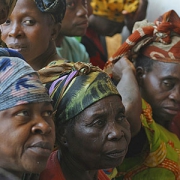Using cell phones to improve pregnancy in Herat

Photo credit: Dimagi
With funding from USAID, World Vision and Dimagi will conduct operations research to test if the use of CommCare will increase the uptake of healthy actions, improve knowledge of important information points, and improve communications and coordination between community health workers (CHWs) and higher trained workers.
CommCare is a phone-based application to strengthen community health programs. CHWs use software running on a phone during each client visit to improve quality of care and data reporting. When the CHW is within range of a cellular network, data is automatically submitted to a central server for use in program management, monitoring and health surveillance.
World Vision’s study will focus on improving the uptake of a list of identified “Healthy Actions” and knowledge of key “Important Information” points. It will also study the improvement that the phone make between the CHWs for coordination with midwives and other health experts. World Vision expects the following:
- Utilization – increased percentage of healthy actions taken by pregnant women
- Knowledge Access – increased knowledge by pregnant women of the important information points
- Access- increased use of midwives and expert services via phone calls
The primary CommCare module the study will focus on promotes essential care during and immediately after pregnancy. The module reinforces the training the CHWs will have received based on the American College of Nurse-Midwives Home Based Life Saving Skills. The module is designed to quickly bring a CHW through key points of identifying and responding to emergency signs including difficulty breathing, low birth weight, and hypothermia. The module then helps the CHW promote simple but effective hygiene and preventive care to reduce infections such as infected cord stumps, pneumonia, and tetanus.
A key challenge World Vision encountered was that the CHWs in the Herat region are low-literate. CommCare was, therefore, adapted for low-literate users by including audio prompts and images. These multimedia prompts have been found to also help engage the client more, as the CHWs play the audio clips and show images to their clients.
The following video demonstrates how the CommCare application works:
CommCare-Sense House Visit 1 from Derek Treatman on Vimeo.
Click here to learn more about this project.






































